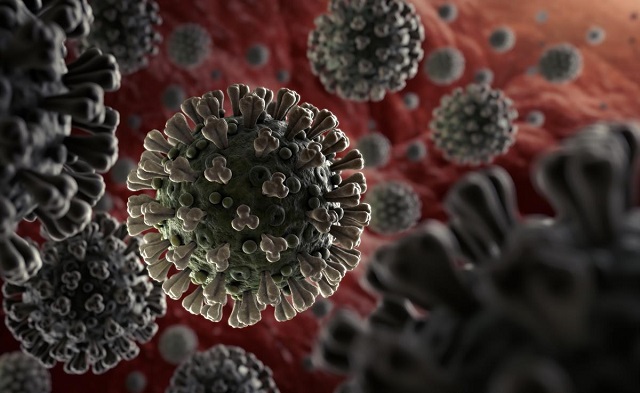
The U.S.-China coronavirus blame game
Baca Juga

Their conspiracies are getting dangerous when what the world needs today is cooperation not confrontation
COMMENT | JOHN POMFRET | In early 1952, the three-year-old People’s Republic of China faced a public relations crisis in the middle of the Korean War. After agreeing to let prisoners of war (POWs) decide where they wanted to go after hostilities ended, officials were dismayed to learn that more than half of the 170,000 Chinese POWs had opted not to return to mainland China, an embarrassing public rejection of the communist system taking root there.
Desperate to divert the world’s attention from the POW debacle, on Feb. 22, 1952, the Communist Party’s mouthpiece, the People’s Daily, claimed that U.S. forces were waging biological warfare against China. An international commission, organised by the Soviet-controlled World Peace Council and staffed by leftists from the West, predictably corroborated the charges. But the allegations were bogus. According to material in the Soviet archives, Lavrenty Beria, then head of Soviet intelligence, noted that the Chinese created “false plague regions” and were dressing up ordinary burials as those of germ-warfare victims.
On May 2, 1953, the Presidium of the USSR Council of Ministers dismissed the accusations as “fictitious” and advised China’s leader Mao Zedong to knock it off. But China officially insisted that the allegations were accurate all the way until 2013, when Wu Zhili, who had served as the chief surgeon of Chinese forces in Korea, admitted that the claims were false and that he had been ordered to fabricate evidence.
Flash-forward to 2020, and the Chinese government is doing it again. Beijing officials have launched an international propaganda campaign to induce doubt into the widely accepted view that the coronavirus originated in central China. And as it did in 1952, China says the United States could be the source of the virus.
At the center of these accusations is a spokesman at the Ministry of Foreign Affairs named Lijian Zhao, who has become famous for his in-your-face Twitter feed, even though, ironically, the social media platform is banned inside China. On March 12, Zhao suggested that “it might be the US Army who brought the epidemic to Wuhan…. US owe us an explanation!”
Later that day, Zhao took another page from the 1952 playbook by tweeting out a report from a friendly organisation, in this case the Center for Research on Globalisation; a Canadian-based outfit that promotes conspiracy theories that generally align with Russian propaganda. In the report, the center claims that the virus somehow escaped from a U.S. bioweapons lab. “Further evidence that the virus originated in the U.S.,” Zhao wrote.
But, just as in 1952, China has no monopoly on misinformation.
During the Korean War, U.S. authorities imbued their Chinese enemy with superhuman capabilities. Edward Hunter, a former U.S. intelligence officer, coined the word “brainwashing” and credited the Chinese government with “psychological warfare on a scale incalculably more immense than any militarist of the past has ever envisaged.” When China returned the first group of U.S. prisoners in April 1953, the Defense Department quarantined the men in an Army hospital in Pennsylvania, where they were subjected to “political psychiatric therapy” to counteract Chinese communism.
Now we have Sen. Tom Cotton, a Republican from Arkansas, who has charged that the coronavirus may have been developed in a Chinese “superlaboratory” and introduced into America. The only “proof” that Cotton and other conspiracy theorists have for this allegation is that there is a highly respected scientific laboratory located in Wuhan, the same city where the virus is believed to have jumped from an animal to a human.
More broadly, the official U.S. government reaction to how China has dealt with the crisis continues to focus more on scoring PR points against Beijing than on working with China to halt the virus’s spread. On March 16, President Trump sparked anger when he called covid-19 “the Chinese Virus.” The tactic — which has also been deployed by Secretary of State Mike Pompeo, who favors calling it the “Wuhan virus” — is designed to keep the focus on China’s responsibility for the outbreak, despite the urging of the World Health Organisation to avoid using names for the virus that could incite racial discrimination or xenophobia.
Also playing the blame game is national security adviser Robert C. O’Brien, who as late as early March continued to harp on the blatantly obvious fact that China egregiously mishandled the onset of the crisis. Why is it necessary to regurgitate yesterday’s news when we need cooperation today?
Did China mess up? Definitely. But the severe travel restrictions and intrusive monitoring of hundreds of millions that China instituted after its missteps did, in the end, help to limit the spread. It might be tough to acknowledge, but it’s true.
In a Facebook post, Kaiser Kuo, an editor-at-large of the news site SupChina, bemoaned the U.S.-China recriminations. “So sick of this,” he wrote. Instead of teaming up against the virus, people have been “pushing baseless conspiratorial hogwash in both Beijing and DC?”
And it’s only going to get worse. On March 17 China announced that it was planning to expel reporters working in China for The Washington Post, the New York Times and the Wall Street Journal. The move was made in response to far less draconian limits instituted by the Trump administration on Chinese reporters in the United States.
By cutting off the flow of information, China guaranteed that the conspiracy virus is going to keep spreading.
****
John Pomfret, a former Washington Post bureau chief in Beijing, is the author of `The Beautiful Country and the Middle Kingdom: America and China, 1776 to the Present’
CLICK TO READ ONLINE MAGAZINE HERE
The post The U.S.-China coronavirus blame game appeared first on The Independent Uganda:.

0 Response to "The U.S.-China coronavirus blame game"
Post a Comment